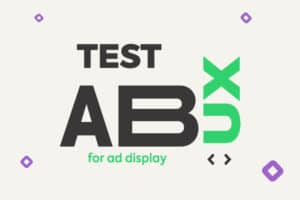In the heart of the digital industry, where the speed of information is as vital as its accuracy, optimizing LCP (Largest Contentful Paint) on your sites is not just a recommended practice, but an urgent need to sustain and increase your advertising revenue.
In the universe of Accelerated Mobile Pages (AMP), this optimization gains an extra layer of complexity and opportunity, becoming a strategic differentiator for publishers seeking excellence.
Index
- 1 1. The Art of Precisely Optimizing Images
- 2 2. LCP Optimization through CSS and JavaScript
- 3 3. Intelligent Resource Prioritization
- 4 4. LCP Optimization and User Experience with Conditional Rendering
- 5 5. LCP Optimization Accelerated by the Use of Caches and CDNs
- 6 Commitment to Excellence and Sustainable Growth
- 7 LCP Optimization as a Pillar of Success
1. The Art of Precisely Optimizing Images
For publishers of large portals, LCP optimization through image optimization is essential. Adopting image formats like WebP and techniques such as lazy loading are crucial for LCP optimization, directly affecting user engagement and attractiveness to premium advertisers.
2. LCP Optimization through CSS and JavaScript
LCP optimization requires careful management of CSS and JavaScript. Minification and merging files, along with asynchronous loading, are key strategies for optimizing LCP, simplifying maintenance, and improving the user experience.
3. Intelligent Resource Prioritization
LCP optimization can be significantly improved with the strategic use of preload and prefetch. This approach demonstrates an understanding of user needs and optimizes the overall experience by prioritizing critical resources.
4. LCP Optimization and User Experience with Conditional Rendering
Conditional rendering is a powerful technique for optimizing LCP, especially on mobile devices. Adapting specific content for different devices improves LCP and reflects a commitment to a superior user experience.
5. LCP Optimization Accelerated by the Use of Caches and CDNs
The effective use of caches and CDNs is vital for optimizing LCP. This strategy not only significantly improves LCP for global audiences but also demonstrates a digitally prepared operation for the future.
Commitment to Excellence and Sustainable Growth
Optimizing LCP on AMP sites is not just a technical issue; it’s an integrated strategy that aligns technology, content, and monetization. For publishers operating in the current digital, agile, and highly competitive scenario, these practices are not optional but essential for long-term success. Implementing these techniques demonstrates a commitment to operational excellence and the creation of a solid foundation for sustainable growth.
Adopting a holistic approach to LCP optimization also means recognizing the importance of superior user experience as a competitive differentiator. As monetization becomes increasingly challenging in a saturated environment, the ability to offer a fast, accessible, and pleasant site not only improves engagement metrics but also raises the value perceived by advertisers. Therefore, LCP optimization transcends performance technique, directly impacting revenue and reputation.
LCP Optimization as a Pillar of Success
For publishers looking to maximize their revenues without compromising the quality of the user experience, LCP optimization on AMP sites is a pillar of success. By implementing the described strategies, not only is performance improved, but also the relationship with users and advertisers is strengthened. This is the path for publishers who not only seek to survive but to thrive in the digital era, ensuring a robust platform for continuous and sustainable business growth.
Facing these challenges with innovative and strategic solutions is not just a matter of technology but an expression of business vision and commitment to providing an exceptional experience to all stakeholders. The journey to optimize LCP is continuous, requiring constant attention, but the rewards—in terms of user engagement, SEO performance, and monetization opportunities—are immeasurable.
Additional Resources
Assessing a site’s performance is crucial to understand how to optimize it and improve the user experience. Site speed testing tools offer valuable insights into different aspects of site performance, from loading time to specific optimization recommendations.
Here is a detailed list of recommended tools for site speed testing, along with tips on how to interpret and act based on the results provided by them.
Google PageSpeed Insights
- Description: PageSpeed Insights is a Google tool that analyzes the content of a web page and generates suggestions to make it faster, focusing on both mobile and desktop versions.
- How to Use: Insert the site URL and press “Analyze.” The tool will return a performance score from 0 to 100, in addition to diagnostic insights and optimization recommendations.
- Interpretation of the Results: A score above 90 is considered good, between 50 and 90 needs improvement, and below 50 is classified as poor. Focus on the provided recommendations to improve site performance.
GTmetrix
- Description: GTmetrix offers a detailed analysis of page loading, combining the results of PageSpeed Insights and YSlow to offer a comprehensive view of site performance.
- How to Use: Enter the URL of the page you want to analyze and click on “Test your site.” The tool provides performance metrics, such as total loading time, total page size, and the total number of requests.
- Interpretation of the Results: GTmetrix categorizes the results from A (best) to F (worst) to facilitate understanding. Additionally, it offers a list of priorities for optimization, detailing the specific actions you can take to improve each aspect of your site’s performance.
Lighthouse
- Description: Lighthouse is an open-source automated tool developed by Google to improve the quality of web pages. It can be run as a Chrome extension or directly in the Chrome DevTools “Audits” tab.
- How to Use: In Chrome DevTools, go to the “Audits” tab, choose the categories to be audited (Performance, Accessibility, Best Practices, SEO, and PWA), and click on “Generate report.”
- Interpretation of the Results: Lighthouse provides a score in each category, with a series of specific performance metrics, such as the First Contentful Paint (FCP) and the Time to Interactive (TTI). Additionally, it highlights optimization opportunities and best practices that are not being followed.
How to Act Based on the Results
- Prioritize Corrections: Start with the areas that most impact performance, such as image optimization, JavaScript and CSS reduction, and improving server response time.
- Implement Incremental Changes: Make changes one at a time and test performance after each change to understand its impact.
- Monitor Performance Continuously: Site performance can change with new content, software updates, and infrastructure changes. Maintain a continuous cycle of evaluation and optimization.
- Consider the User Experience: While working on performance optimization, remember that the ultimate goal is to improve the user experience. Avoid solutions that improve performance metrics at the expense of usability.
By using these tools and following the recommendations, you can significantly improve your pages’ loading time, user engagement, and consequently, your ranking in search engines. Above all, count on Grumft to support you in this journey. Our super-optimized ad tags do not harm your site’s optimization in the CWV signals. Get in touch with your account manager.





